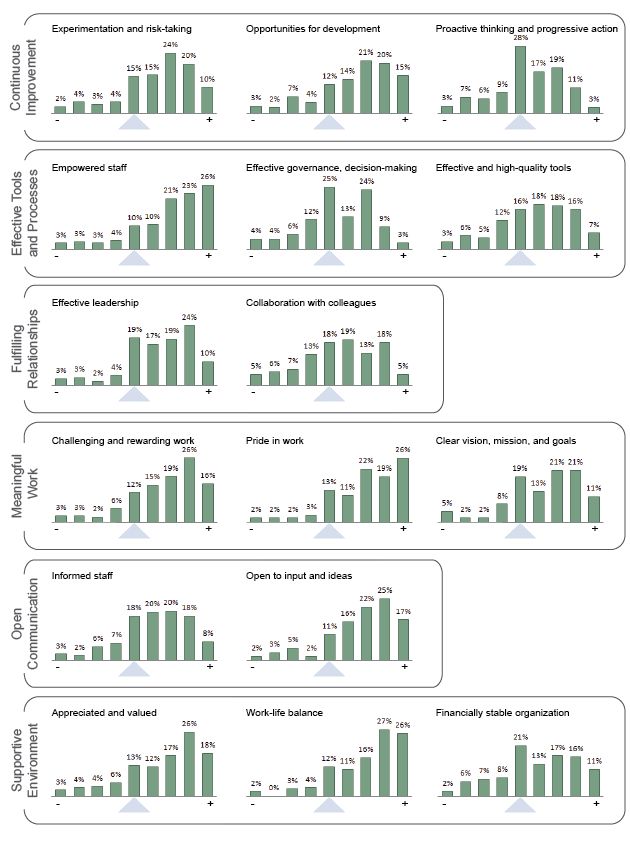Introduction
The essence of any good technology organization is good people. Measuring employee satisfaction—and then taking steps to enhance it—is essential to attracting and retaining the caliber of staff needed to deliver high-quality IT services to the UW community. Toward that goal, UW-IT measures employee satisfaction annually.
December 2012 survey results
Staff were asked to provide feedback on how well UW-IT is doing in 16 aspects of an exemplary organization, and about 35% (201 full- and part-time staff, including students) completed the survey. On average, the results continued to be positive, with only slight variations between the 2011 and 2012 surveys. Here's what has changed for 2012:
- Six aspects went up slightly: Appreciated/Valued Staff; Effective Leadership; Empowered Staff; Open to Input/Ideas; Experimentation, Risk-taking; and Opportunities for Development
- Two aspects remained the same: Pride in Work and Informed Staff
- Three aspects went down slightly: Clear Vision, Mission, Goals; Collaboration With Colleagues; and Challenging, Rewarding Work
Also, five aspects were added to the 2012 survey: Proactive Thinking, Progressive Action; Effective, High-Quality Tools; Work-Life Balance, and Financially Stable Organization. (Comparable data is not available, but these will become the baseline for comparison in future years.)
Employee "Organizational Pulse" Satisfaction Survey
The graph shows the 2012 survey results metrics. See results from the 2011 survey.

Action Plan
In response to the survey, UW-IT’s senior leadership team developed a plan to achieve continuous improvement. Actions include:
- Continue to offer and improve the leadership development program launched in June 2012
- Enhance UW-IT’s intranet to make it a better and more useful resource for staff
- Develop a portal for UW-IT staff to learn about existing communities or special interest groups (SIGs) internally or across campus
- Host succession planning workshops for managers to help identify risks, increase bench strength, and transfer knowledge
- Create more tools and training for onboarding new staff
- Seek staff input on ways to encourage and support increased collaboration
- Continue to improve internal communications, including cascading of information throughout the organization